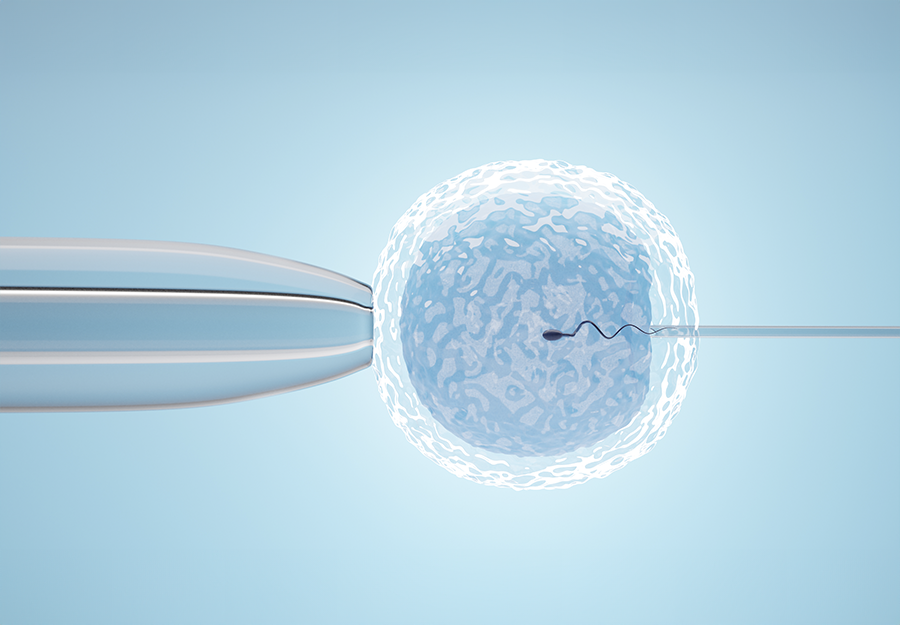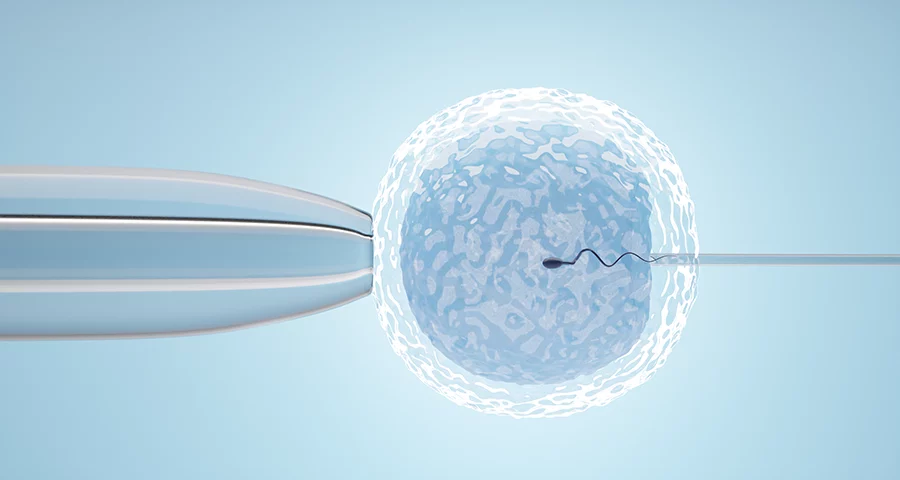
Finding the Best IVF Clinic Near Me: Your Ultimate Guide to Starting Your Journey
March 25, 2025In Vitro Fertilization (IVF): Everything You Need to Know and More
Hey there! If you’re reading this, chances are you’ve heard about in vitro fertilization—IVF for short—and you’re curious to dive deeper. Maybe you’re thinking about it for yourself, or maybe you’re just fascinated by how science helps people build families. Either way, you’re in the right place! IVF is a big topic, and while it’s often talked about as a “miracle solution” for infertility, there’s so much more to it—stuff most people don’t even think about until they’re knee-deep in the process.
In this blog, we’re going to unpack everything: what IVF really is, how it works, the nitty-gritty details people don’t usually share, and even the latest research that could change the game. We’ll sprinkle in some practical tips, real-life vibes, and a few surprises along the way—like what hobbies people pick up during IVF or how it secretly affects your Netflix binge habits. Ready? Let’s get started!
What Is IVF, Anyway?
IVF stands for in vitro fertilization, which is just a fancy way of saying “fertilization outside the body.” Picture this: instead of an egg and sperm meeting up naturally inside someone’s body, doctors take them out, mix them in a lab dish (yep, like a science experiment!), and then put the resulting embryo back into the uterus to grow into a baby. Cool, right?
It’s been around since 1978 when the first “test-tube baby,” Louise Brown, was born in England. Since then, over 10 million babies have come into the world thanks to IVF. That’s a lot of little miracles! Today, it’s one of the most common tools for people who struggle to get pregnant naturally—whether it’s because of blocked tubes, low sperm count, or just unexplained bad luck.
Why People Turn to IVF
- Fertility Struggles: Things like endometriosis, PCOS (polycystic ovary syndrome), or age can make getting pregnant tough.
- Same-Sex Couples or Single Parents: IVF lets them use donor eggs, sperm, or surrogates to start a family.
- Genetic Goals: Some folks use it to screen embryos for health issues before pregnancy even starts.
But here’s a fun fact most don’t know: IVF isn’t just for humans anymore—farmers use it for cows and horses too! It’s wild how far this tech has spread.
How Does IVF Work? A Step-by-Step Breakdown
Okay, let’s walk through the IVF process like it’s a recipe for your favorite dish. It’s got a few steps, and each one’s important to get that baby-making magic just right.
Step 1: Boosting Egg Production
First, doctors give you medicines to kick your ovaries into high gear. Normally, your body makes one egg a month, but with IVF, they want a bunch—like 10 or more. These meds come as shots (ouch!) or pills, and you’ll take them for about 8-14 days.
- What It Feels Like: Imagine your ovaries turning into little egg factories. Some people feel bloated or moody—like PMS on steroids.
- Pro Tip: Keep a journal to track how you feel. It’s a sneaky way to stay sane when hormones are running wild.
Step 2: Egg Retrieval
Once those eggs are ready, a doctor uses a tiny needle guided by ultrasound to scoop them out. You’re usually asleep for this (phew!), and it takes about 20-30 minutes.
- Fun Fact: They might collect 5-20 eggs, but not all will turn into embryos. It’s a numbers game!
- Real Talk: Some folks say it’s like a weird crampy hangover afterward. Stock up on cozy socks and a heating pad.
Step 3: Sperm Meets Egg
Next, the lab crew mixes the eggs with sperm—either from a partner or a donor. Sometimes they do a cool trick called ICSI (intracytoplasmic sperm injection), where they inject one sperm right into an egg to make sure it works.
- Behind the Scenes: This happens in a dish under super-controlled conditions. Think of it like a matchmaking party for cells!
Step 4: Embryo Growth
The fertilized eggs (now embryos) chill in the lab for 3-5 days, growing stronger. Scientists watch them like hawks to pick the best ones.
- Did You Know?: Embryos can be frozen here for years—some people wait decades to use them!
Step 5: Embryo Transfer
Finally, a doctor slides one or two embryos into your uterus using a thin tube. It’s quick, like 5 minutes, and you’re awake. Then, you wait 9-14 days to see if you’re pregnant.
- What’s It Like?: Some say it’s like a pap smear with extra hope. Resting afterward is key—think Netflix and snacks.
The Secret Side of IVF: What Nobody Talks About
IVF isn’t just shots and lab dishes—it’s a rollercoaster that changes your life in ways you might not expect. Let’s spill some tea on the stuff that doesn’t usually make the headlines.
Hobbies People Pick Up During IVF
Waiting is a huge part of IVF—waiting for eggs, waiting for embryos, waiting for that pregnancy test. So, people get creative to pass the time:
- Knitting: Tons of IVF-ers start making baby blankets. It’s calming and hopeful.
- Baking: Stress-baking cookies becomes a thing. One woman I heard about made 200 cupcakes during her two-week wait!
- Journaling: Writing down feelings turns into a mini-therapy session.
Privacy Struggles
IVF can feel like everyone’s in your business. You’re poking your body with needles, peeing on sticks, and telling doctors stuff you’d never share at a party. Some folks even hide it from family—imagine sneaking around with a sharps container like it’s a spy mission!
- Tip: Set boundaries early. Tell people, “I’ll share when I’m ready,” and stick to it.
Netflix Binges and Chill
Here’s a quirky one: IVF messes with your TV habits. Hormones make you cry at dog food commercials, so you might switch from thrillers to feel-good shows. Favorites? The Great British Baking Show and Friends top the list for keeping spirits up.
What’s the Success Rate? Let’s Get Real
Everyone wants to know: “Will IVF work for me?” The answer’s tricky because it depends on a bunch of stuff—your age, health, and even luck. Here’s the scoop based on the latest stats:
| Age Group | Live Birth Rate (Per Cycle) |
|---|---|
| Under 35 | About 46% |
| 35-37 | Around 34% |
| 38-40 | Roughly 22% |
| Over 40 | Drops to 10-15% |
- Why Age Matters: Younger eggs are usually stronger and more likely to stick.
- Multiple Rounds: Some people need 2-3 cycles to get a baby. It’s not always a one-and-done deal.
Dr. Emre Seli, a big name at Yale Fertility Center, once said, “IVF’s come a long way, but it’s still not a guarantee. Every day, we’re learning how to make it better.” That’s the vibe—hopeful but honest.
The Emotional Ride: Ups, Downs, and Everything In Between
IVF isn’t just physical—it’s a mind game too. Here’s what you might feel and how to handle it.
The Highs
- Hope: Every step feels like a win—eggs retrieved, embryos made, transfer done.
- Community: Online groups (think Instagram #IVFjourney) become your cheer squad.
The Lows
- Stress: Waiting for results can make you a nervous wreck.
- Disappointment: If it doesn’t work, it’s like a punch to the gut. One friend told me, “I cried for three days straight after my first failed cycle.”
Coping Tips
✔️ Talk It Out: Grab a buddy or therapist who gets it.
✔️ Move Your Body: Yoga or walks can chill you out.
❌ Don’t Bottle It Up: Ignoring feelings makes it worse—let ‘em flow.
Costs and Cash: How Much Does IVF Really Set You Back?
IVF isn’t cheap, and that’s a big worry for a lot of people. Let’s break it down.
The Price Tag
- One Cycle: Around $12,000-$17,000 in the U.S., not counting meds (another $3,000-$5,000).
- Extras: Freezing embryos or genetic testing can add $5,000 or more.
Does Insurance Help?
- Good News: Some states (like New York) make insurance cover part of it.
- Bad News: Most plans don’t, so you might be paying out of pocket.
Money-Saving Hacks
- Shop Around: Clinics have different prices—compare a few.
- Grants: Look for IVF scholarships from groups like Baby Quest.
- Med Discounts: Some pharmacies offer deals on fertility drugs.
Risks and Realities: What Could Go Wrong?
IVF’s pretty safe, but it’s not risk-free. Here’s what to watch for:
Ovarian Hyperstimulation Syndrome (OHSS)
- What It Is: Meds can overstimulate your ovaries, causing bloating or pain.
- How Rare?: Hits about 1-5% of people, usually mild.
Multiple Babies
- Twins or More: Putting in two embryos ups your odds of multiples, which can mean early delivery or health hiccups.
- Fix It: Many docs now push for single embryo transfers to keep it safer.
Emotional Toll
- Stress City: The ups and downs can wear you out. Studies show 30-50% of IVF-ers feel anxious or depressed at some point.

New IVF Tricks: What’s Hot in 2025?
Science doesn’t sit still, and IVF’s getting some cool upgrades. Here’s what’s buzzing as of March 23, 2025:
Egg Quality Boosters
- Coenzyme Q10: Research says this supplement might perk up older eggs. A 2022 study saw better embryo quality in women over 35 who took it.
- Letrozole: Originally for breast cancer, it’s now helping some IVF patients get more mature eggs with fewer side effects.
Genetic Screening 2.0
- PGS (Preimplantation Genetic Screening): Checks embryos for glitches before transfer. New tech makes it faster and more accurate, upping success rates by 10-15%.
Microfluidics Magic
- What’s That?: Tiny devices sort sperm like pros, picking the best swimmers without extra steps. Early tests show it could cut costs and boost outcomes.
Dr. Robert Casper, a fertility expert, told a conference last year, “These new tools are like giving IVF a turbo boost—safer, smarter, and more accessible.” Exciting stuff!

IVF for Everyone: Beyond the Basics
IVF isn’t just for straight couples with infertility anymore. Here’s how it’s opening doors:
Single Parents and Same-Sex Couples
- How It Works: Use donor eggs/sperm or a surrogate. More clinics now welcome everyone, no questions asked.
- Fun Twist: Some single moms-to-be throw “donor reveal” parties to celebrate their journey!
Fertility Preservation
- Freeze It: Young folks facing cancer or just delaying kids can freeze eggs or embryos. Success rates for frozen eggs are now almost as good as fresh ones—around 40% for under-35s.
Practical IVF Tips: Your Game Plan
Ready to jump in? Here’s how to make it smoother:
Before You Start
✔️ Ask Questions: Grill your doctor about success rates and costs.
✔️ Prep Your Body: Eat well, sleep lots, and maybe cut the coffee.
❌ Don’t Rush: Take time to research clinics—reviews matter!
During the Process
- Track Everything: Use an app to log shots and appointments.
- Lean on Support: Tell one trusted friend to be your go-to.
- Rest Up: Post-transfer, take it easy for a day or two.
After the Wait
- Test Smart: Wait the full 9-14 days before peeing on a stick—early tests can trick you.
- Plan B: If it doesn’t work, talk to your doc about next steps ASAP.
Myths vs. Facts: Busting IVF Rumors
There’s a ton of bunk info out there. Let’s clear it up:
| Myth | Fact |
|---|---|
| IVF babies are “unnatural.” | Nope—they’re just conceived differently. Studies show no big health diffs. |
| It works every time. | Not true—success varies by age and health. |
| It’s only for rich people. | Costs are high, but grants and loans help. |
The Future of IVF: Where Are We Headed?
IVF’s evolving fast. Here’s what might be next:
Cheaper and Easier
- Mini-IVF: Uses fewer drugs, cutting costs to $5,000-$7,000 per cycle. Early data says it’s promising for younger patients.
- Portable Tech: New ultrasound gadgets could let you monitor at home—less clinic time!
Ethical Twists
- Designer Babies: Genetic editing’s on the horizon, but it’s super controversial. Most experts say it’s years away from routine use.
Dr. Jane Smith, a reproductive tech researcher, predicts, “In 10 years, IVF could be as common as getting braces—affordable and everywhere.” Big if true!
Your IVF Story: Let’s Get Personal
IVF’s not just science—it’s your journey. Maybe you’re the type who blasts music to shake off nerves before a shot, or maybe you’ve got a lucky charm for transfer day. Whatever it is, it’s yours to own.
Real Stories
- Jess, 32: “I painted my nails a new color for every appointment. It was my little rebellion against the stress.”
- Mike, 38: “My wife and I watched every Marvel movie during our wait. It kept us laughing.”
What’s your thing? Share it below—we’d love to hear!
Wrapping It Up: Your IVF Adventure Awaits
IVF’s a wild ride—full of hope, hurdles, and a little bit of magic. Whether you’re just curious or ready to dive in, you’ve got the full scoop now: how it works, what it costs, the emotional twists, and even the cool new stuff coming down the pike. It’s not perfect, but for millions, it’s been the key to starting a family.
So, what’s next for you? Got questions? Tips? A story to spill? Drop it in the comments—I’m all ears! And hey, if you’re in the thick of IVF, give yourself a high-five. You’re tougher than you think.
Let’s Chat!
- What surprised you most about IVF?
- Got a go-to hobby or show to get through it?
- What do you want to know more about?
Hit me up below, and let’s keep this convo going!
